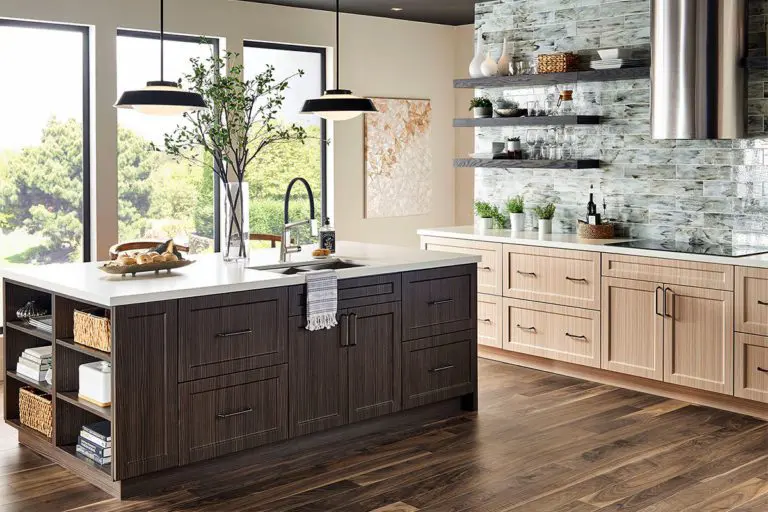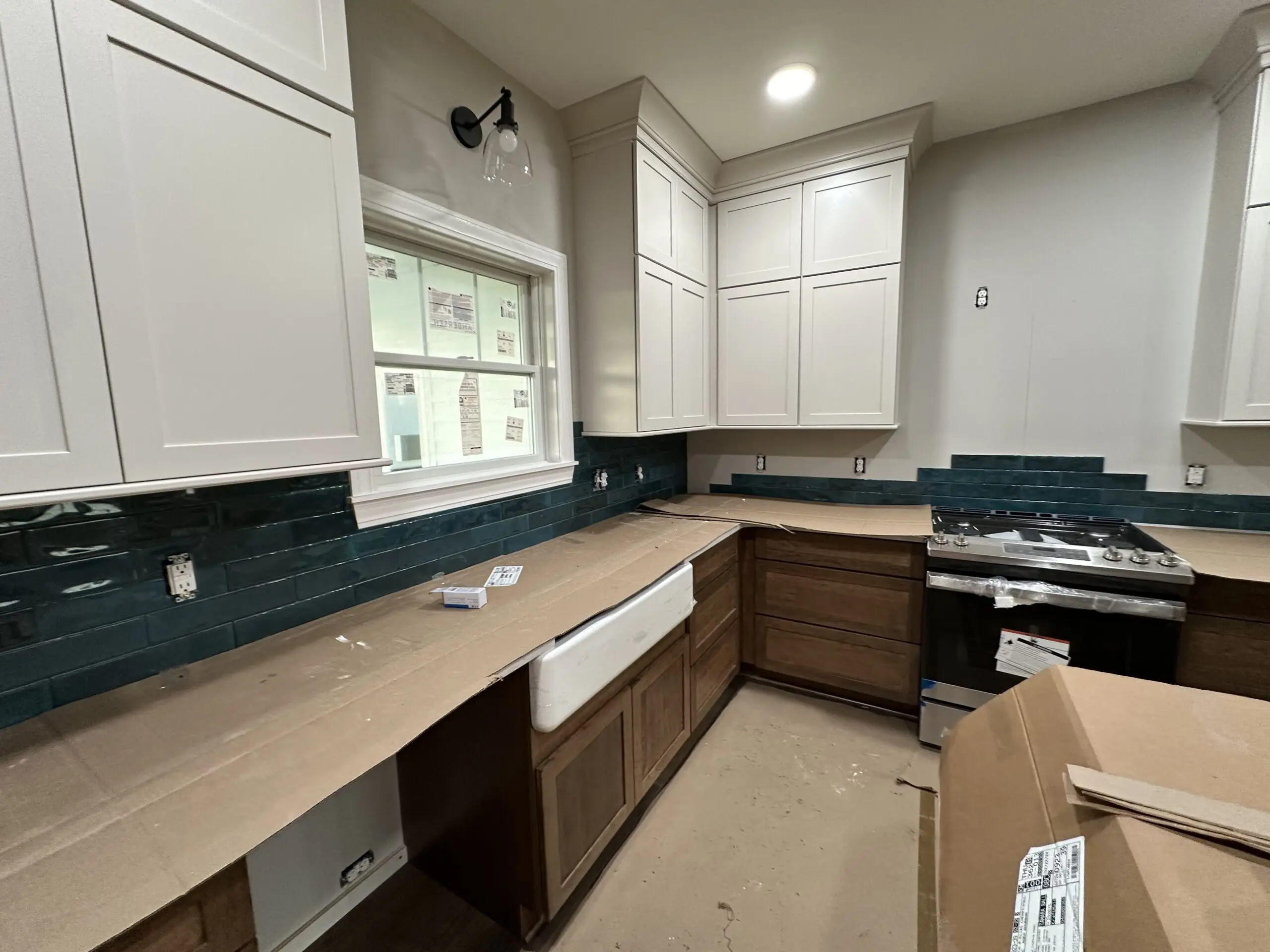
When planning a new kitchen or a kitchen remodel, one of the first style choices you’ll face is deciding between framed and frameless cabinets. Both offer distinct looks and storage benefits, and the right choice can make all the difference.
Learning the key differences between framed vs. frameless cabinets, from their styles to their operations, will help you pick the best option for your project.
Understanding the Basics of Cabinet Construction
What Are Framed Cabinets?
Framed cabinets are a more traditional choice. The cabinet box has a visual frame on the front made from vertical stiles on the sides and horizontal rails at the top and bottom.
This frame is both functional, as it’s an attachment point for the cabinet doors and gives structural support, and attractive. Doors and drawers can be connected in various ways, depending on the style of the cabinet.
Framed cabinets can have a partial or a full overlay. On cabinets with a partial overlay, the face frame is only partially covered by the doors or drawers. With a full overlay, the frame is entirely covered and only visible when the doors or drawers are open.
The other type of framed cabinet is one with inset doors or drawers, where they sit inside the frame with no overlay, creating a flush, flat surface.
What Are Frameless Cabinets?
Frameless cabinets, also known as full-access, have become very popular in recent decades. With frameless cabinets, the doors or drawers are attached with hinges to the sides of the cabinet box and cover the entire front of the box for a smooth appearance.
Frameless cabinets are often built with heavier types of wood to add structural stability and deliver a more contemporary, minimalist look.
Comparing Framed vs. Frameless Cabinets
Aesthetic Differences
Framed cabinets can range widely in appearance, depending on whether they’re inset or have partial or full overlay. They tend to look slightly more uniform and provide a classic aesthetic, while frameless cabinets lean toward a more modern look.
However, you can certainly find examples of either cabinet in styles that range from traditional to contemporary.
Durability and Strength
Strength can vary between framed and frameless cabinets, but not in every case. A frame does add durability and structural integrity, but frameless cabinets can be equally strong when constructed from a strong material.
Storage and Accessibility
In some cases, frameless cabinets can provide more storage space than framed cabinets, as they don’t have a frame taking up space at the opening.
As for drawers, the openings on a framed cabinet tend to be smaller than frameless options. However, some framed cabinets have under-mount drawer glides, which allow for more space inside the drawer.
When it comes to shelving, there is little to no difference in space between framed and frameless cabinets.
In a framed cabinet with a partial overlay, a central rail prevents a gap between the closed doors. This can reduce space, especially if you have large appliances or other objects to store.
Installation Considerations
Typically, framed cabinets are a little simpler to install, as the frame makes it easier to align the drawers and doors. Frameless cabinets can be more difficult to install as the boxes must be aligned perfectly.
Some homeowners may be able to install frameless cabinets, depending on their DIY skills. However, professional installation is the best option for high-quality results.
Cost Comparison and Budget Planning
Material and Manufacturing Costs
While material and manufacturing costs can vary widely between locations and product types, frameless cabinets generally cost up to 15% more than framed cabinets.
Labor and Time on Site
Because of the easier process, framed cabinets are generally quicker to install compared to frameless options. This entails securely attaching the cabinets to the floor and/or walls with screws.
With frameless cabinets, the installation process can take longer, as alignment is crucial and can be difficult to achieve. Frameless cabinets can also shift out of internal alignment while they are being transported or handled.
Inadequate alignment can lead to compromised durability and issues with the doors opening and closing. Professional assistance is recommended when installing frameless cabinets to avoid these issues.
Other Considerations That Influence The Decision

Matching Cabinet Type to Project Style
When deciding between framed vs frameless cabinets, you should look at the entire kitchen project as a whole.
For example, if you’re designing an ultra-modern, minimalist kitchen, frameless cabinets are your best bet. On the other hand, if you’re striving for a more traditional or rustic style, framed cabinets will give you the aesthetic you’re looking for.
Budget Goals
Both framed and frameless cabinets will vary in price depending on design and materials. It’s important to explore the available options to find a solution that fits the budget and meets the needs of the project.
Overall, framed cabinets are usually less expensive due to their comparatively quicker and simpler installation process.
Supplier Availability and Custom Options
When you’re selecting kitchen cabinets, you may also have the option for additional accessories like spice racks or utensil organizers. Keep in mind that there can be more room for these kinds of features with frameless cabinets.
Talking with a professional kitchen designer can be a great way to explore your options.
Berry Home Centers: Explore Our Range of Cabinets
No matter what cabinet you choose, you’ll want to rely on a supplier that offers both high-quality products and incredible customer support.
Berry Home Centers is the leading independent, locally-owned building materials supplier in the Southwest Virginia and Northeast Tennessee area.
We supply framed and frameless cabinets of various styles and materials, as well as many other products, to ensure every home project is completed successfully.
Contact our team for more information about our offerings or to request a quote for your next project.
